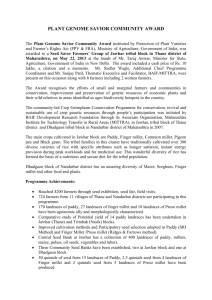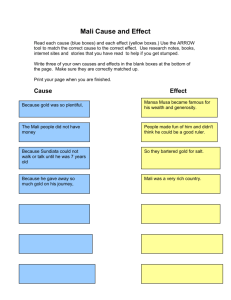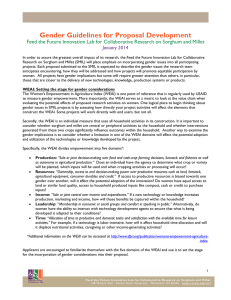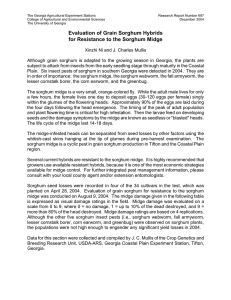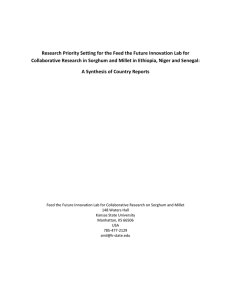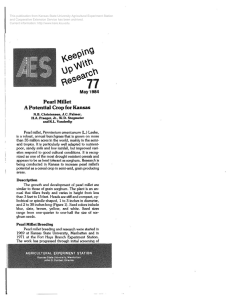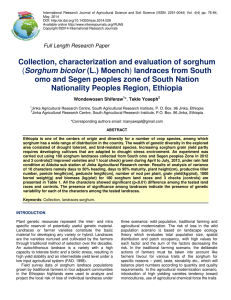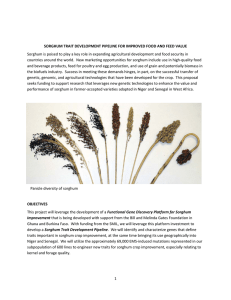DEVELOPMENT AND STRENGTHENING PARTICIPATORY STRATEGIES OF
advertisement
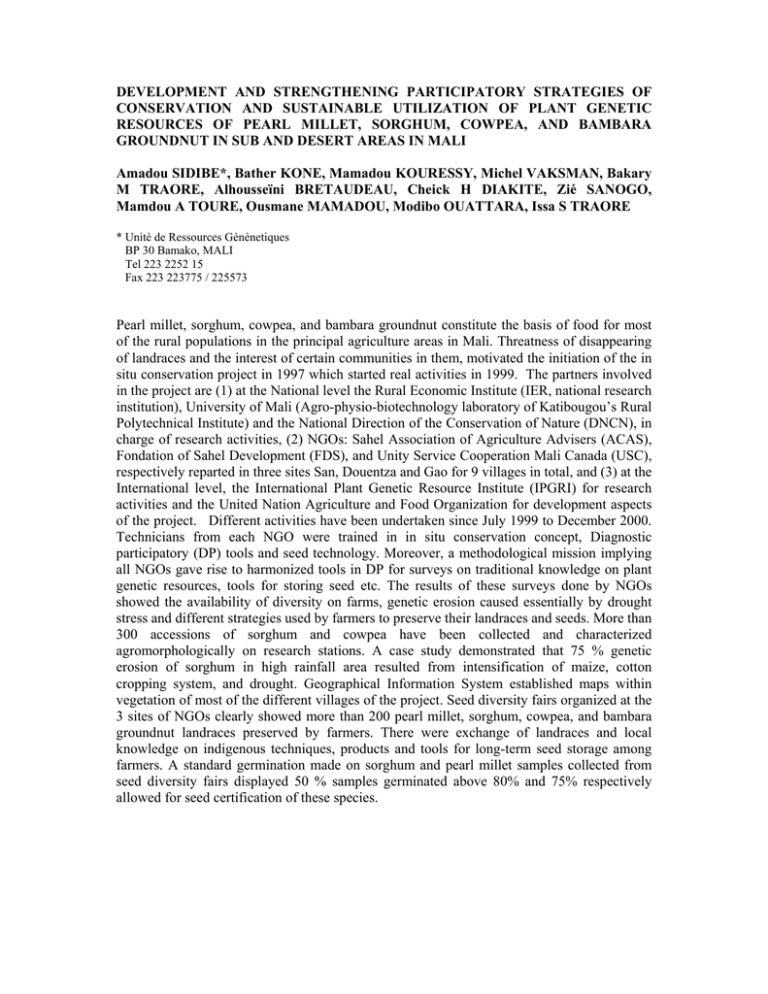
DEVELOPMENT AND STRENGTHENING PARTICIPATORY STRATEGIES OF CONSERVATION AND SUSTAINABLE UTILIZATION OF PLANT GENETIC RESOURCES OF PEARL MILLET, SORGHUM, COWPEA, AND BAMBARA GROUNDNUT IN SUB AND DESERT AREAS IN MALI Amadou SIDIBE*, Bather KONE, Mamadou KOURESSY, Michel VAKSMAN, Bakary M TRAORE, Alhousseïni BRETAUDEAU, Cheick H DIAKITE, Zié SANOGO, Mamdou A TOURE, Ousmane MAMADOU, Modibo OUATTARA, Issa S TRAORE * Unitè de Ressources Gènènetiques BP 30 Bamako, MALI Tel 223 2252 15 Fax 223 223775 / 225573 Pearl millet, sorghum, cowpea, and bambara groundnut constitute the basis of food for most of the rural populations in the principal agriculture areas in Mali. Threatness of disappearing of landraces and the interest of certain communities in them, motivated the initiation of the in situ conservation project in 1997 which started real activities in 1999. The partners involved in the project are (1) at the National level the Rural Economic Institute (IER, national research institution), University of Mali (Agro-physio-biotechnology laboratory of Katibougou’s Rural Polytechnical Institute) and the National Direction of the Conservation of Nature (DNCN), in charge of research activities, (2) NGOs: Sahel Association of Agriculture Advisers (ACAS), Fondation of Sahel Development (FDS), and Unity Service Cooperation Mali Canada (USC), respectively reparted in three sites San, Douentza and Gao for 9 villages in total, and (3) at the International level, the International Plant Genetic Resource Institute (IPGRI) for research activities and the United Nation Agriculture and Food Organization for development aspects of the project. Different activities have been undertaken since July 1999 to December 2000. Technicians from each NGO were trained in in situ conservation concept, Diagnostic participatory (DP) tools and seed technology. Moreover, a methodological mission implying all NGOs gave rise to harmonized tools in DP for surveys on traditional knowledge on plant genetic resources, tools for storing seed etc. The results of these surveys done by NGOs showed the availability of diversity on farms, genetic erosion caused essentially by drought stress and different strategies used by farmers to preserve their landraces and seeds. More than 300 accessions of sorghum and cowpea have been collected and characterized agromorphologically on research stations. A case study demonstrated that 75 % genetic erosion of sorghum in high rainfall area resulted from intensification of maize, cotton cropping system, and drought. Geographical Information System established maps within vegetation of most of the different villages of the project. Seed diversity fairs organized at the 3 sites of NGOs clearly showed more than 200 pearl millet, sorghum, cowpea, and bambara groundnut landraces preserved by farmers. There were exchange of landraces and local knowledge on indigenous techniques, products and tools for long-term seed storage among farmers. A standard germination made on sorghum and pearl millet samples collected from seed diversity fairs displayed 50 % samples germinated above 80% and 75% respectively allowed for seed certification of these species.


